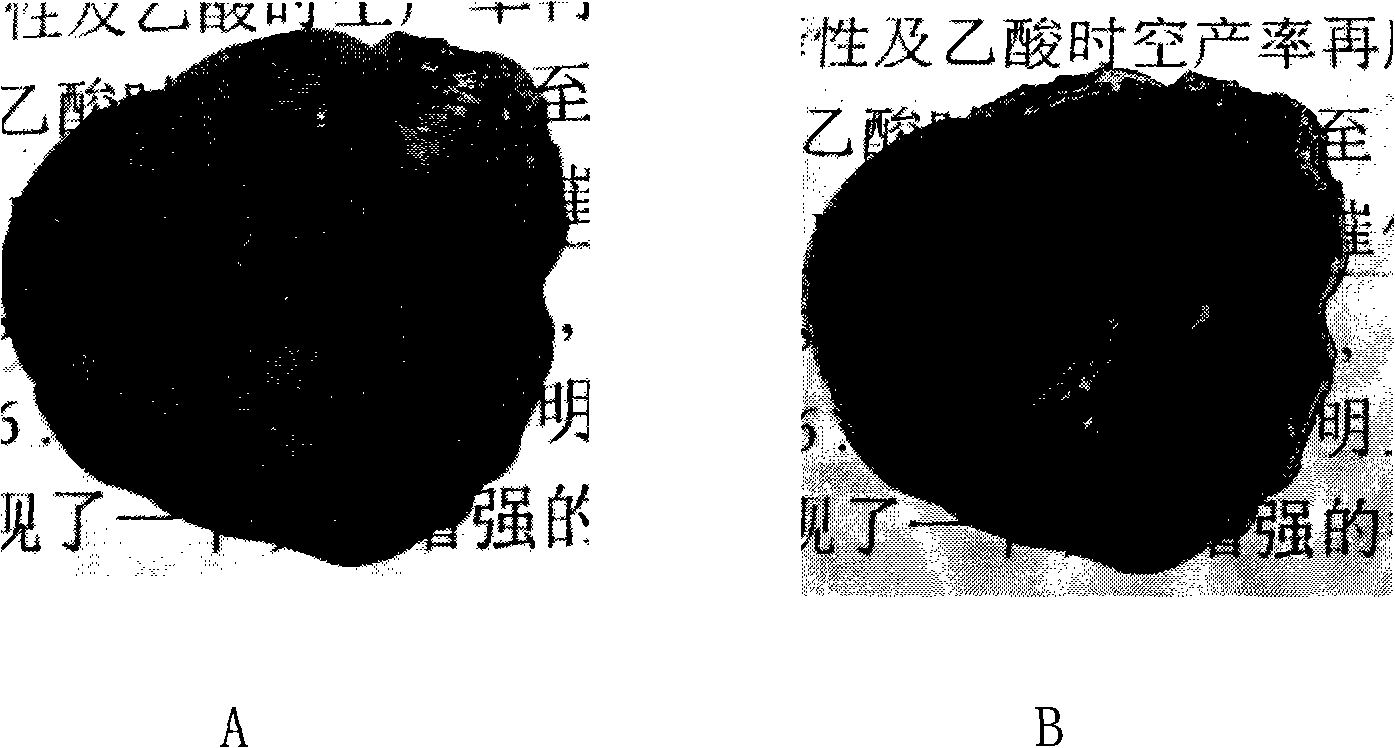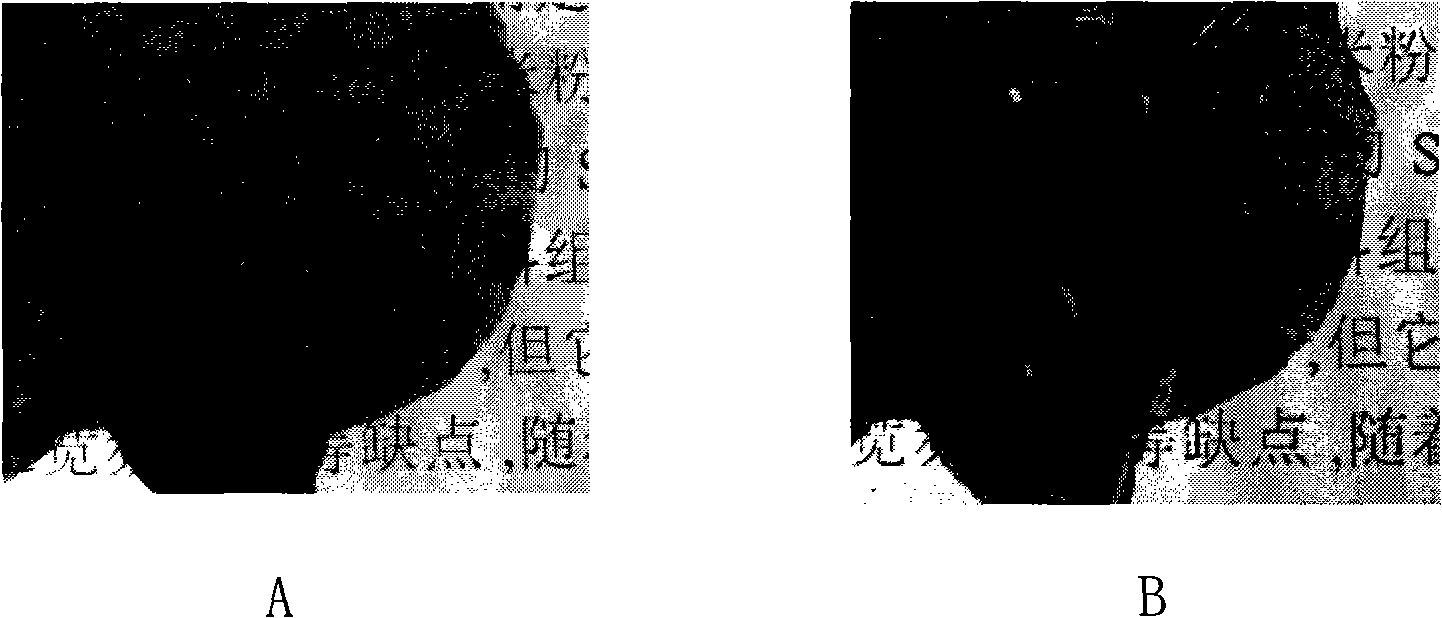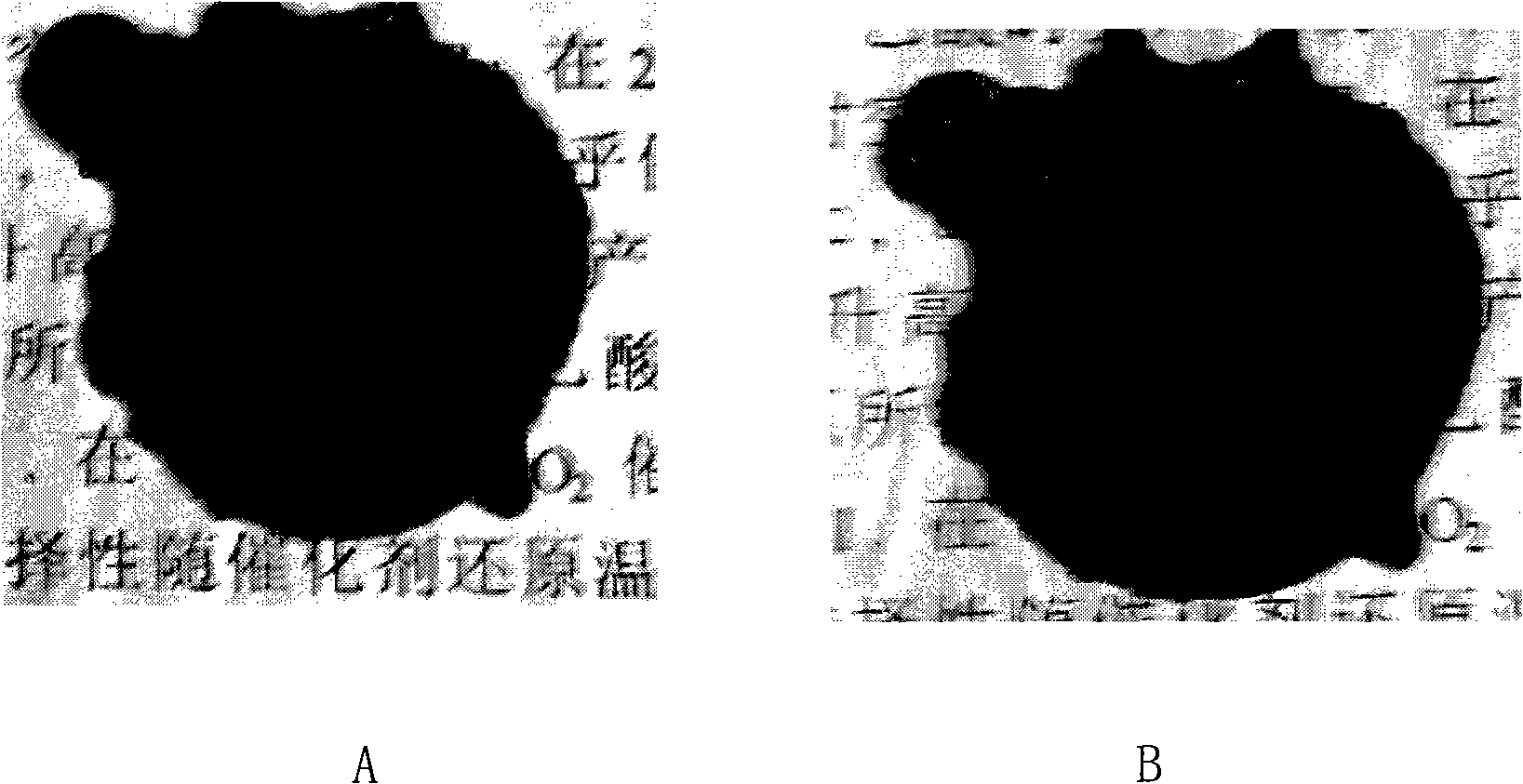Copying-proof film based on organic membrane structure and its preparation
A technology of anti-copying and copying film, which is applied in the printing, printing, sealing and other directions of producing special varieties of printed matter, to achieve the effect of low raw material cost, good application effect and good moisture resistance
- Summary
- Abstract
- Description
- Claims
- Application Information
AI Technical Summary
Problems solved by technology
Method used
Image
Examples
Embodiment 1
[0038] Preparation of cadmium dithizone:
[0039] a) Dissolving the organic compound dithizone in tetrahydrofuran and refluxing for 7 minutes to completely dissolve the dithizone; the weight-to-volume ratio of dithizone to tetrahydrofuran solvent is 0.1 g: 10 mL;
[0040] b) dissolving cadmium nitrate in water to prepare a 0.15M aqueous solution;
[0041] c) The above two solutions were mixed and reacted for about 10min to make the reaction complete; the mol ratio of cadmium ions and dithizone was 1: 1;
[0042] d) adding about 25 volume multiples of water to the solution after the reaction in c), to precipitate the product;
[0043] e) After standing still for 48 hours, the product was filtered and dried.
[0044] Film formation:
[0045] a) adding an appropriate amount of plasticizer to a small amount of prepared dithizone metal salt light-absorbing substance, stirring to make it evenly mixed;
[0046] b) Add an appropriate amount of PVC powder, and finally add THF and s...
Embodiment 2
[0053] Preparation of zinc dithizone:
[0054] a) Dissolving the organic compound dithizone in tetrahydrofuran and refluxing for 10 minutes to completely dissolve dithizone; the weight-to-volume ratio of dithizone to tetrahydrofuran solvent is 0.2 g: 10 mL;
[0055] b) dissolving zinc nitrate in water to prepare a 0.12M aqueous solution;
[0056] c) The above two solutions were mixed and reacted for about 15 minutes to make the reaction complete; the molar ratio of metal ions to dithizone was 1.5:1;
[0057] d) adding about 30 volume multiples of water to the solution after the reaction in c), to precipitate the product;
[0058] e) After standing still for 48 hours, the product was filtered and dried.
[0059] Film formation:
[0060] a) adding an appropriate amount of plasticizer to a small amount of prepared dithizone metal salt light-absorbing substance, stirring to make it evenly mixed;
[0061] b) Add an appropriate amount of PVC powder, and finally add THF and stir ...
Embodiment 3
[0066] Preparation of lead dithizone:
[0067] a) Dissolving the organic compound dithizone in tetrahydrofuran and refluxing for 15 minutes to completely dissolve dithizone; the weight-to-volume ratio of dithizone to tetrahydrofuran solvent is 0.05g: 10mL;
[0068] b) Dissolving lead nitrate in water to prepare a 0.2M aqueous solution;
[0069] c) The above two solutions were mixed and reacted for about 12 minutes to make the reaction complete; the molar ratio of metal ions to dithizone was 2:1;
[0070] d) adding about 20 volume multiples of water to the solution after the reaction in c), to precipitate the product;
[0071] e) After standing still for 8 hours, the product was obtained by filtering and drying.
[0072] Film formation:
[0073] a) adding an appropriate amount of plasticizer to a small amount of prepared dithizone metal salt light-absorbing substance, stirring to make it evenly mixed;
[0074] b) Add an appropriate amount of PVC powder, and finally add THF ...
PUM
| Property | Measurement | Unit |
|---|---|---|
| wavelength | aaaaa | aaaaa |
| wavelength | aaaaa | aaaaa |
| thickness | aaaaa | aaaaa |
Abstract
Description
Claims
Application Information
 Login to View More
Login to View More - R&D
- Intellectual Property
- Life Sciences
- Materials
- Tech Scout
- Unparalleled Data Quality
- Higher Quality Content
- 60% Fewer Hallucinations
Browse by: Latest US Patents, China's latest patents, Technical Efficacy Thesaurus, Application Domain, Technology Topic, Popular Technical Reports.
© 2025 PatSnap. All rights reserved.Legal|Privacy policy|Modern Slavery Act Transparency Statement|Sitemap|About US| Contact US: help@patsnap.com



